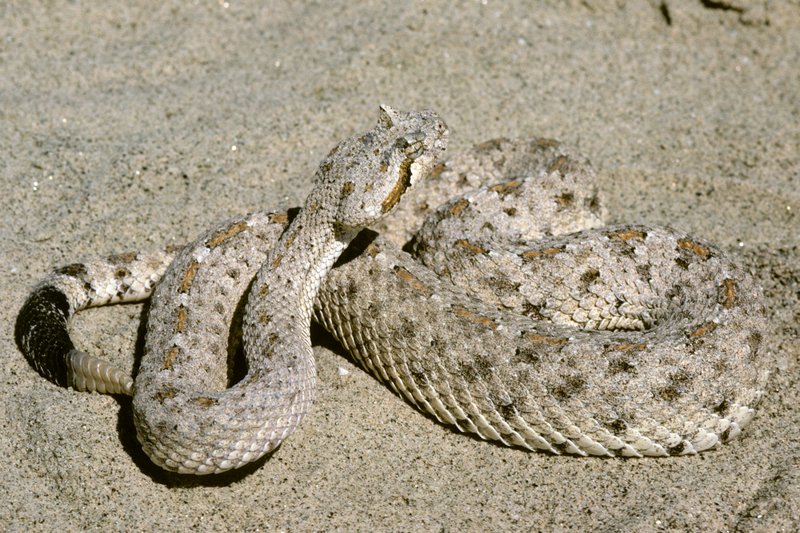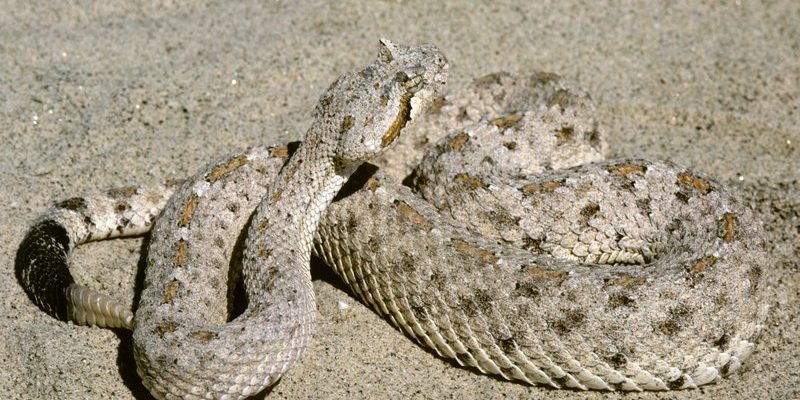
Imagine a snake that moves sideways across the sand, leaving a series of unique tracks that look almost like the elegant dance of a wavy line. Welcome to the world of the Sidewinder! This remarkable reptile is not just fascinating to observe, but it also has some very cool adaptations that help it thrive in harsh desert environments. If you’re curious about what makes the Sidewinder so unique, you’ve come to the right place.
Sidewinders are known for their amazing movement and striking appearance. Found primarily in the Southwestern United States and parts of Mexico, these snakes have developed some extraordinary techniques to navigate their sandy habitats. You might be surprised to learn that there’s much more to these creatures than meets the eye, from their hunting habits to their fascinating reproductive behavior.
What is a Sidewinder?
The Sidewinder is a species of rattlesnake, scientifically known as Crotalus cerastes. It belongs to the family Viperidae and is well-adapted to life in arid desert environments. One of the most interesting features of the Sidewinder is its unique method of locomotion. Unlike other snakes that slither forward, Sidewinders move sideways. This sideways movement prevents them from sinking into shifting sands while allowing them to cover ground quickly.
Typically, the Sidewinder measures between 2 to 3 feet long. Its skin features light brown or beige coloration with dark brown patches, helping it blend into its sandy surroundings. This camouflage is a crucial survival skill, as it allows them to evade predators while they hunt for food.
Characteristics of Sidewinders
Physical Features
Sidewinders are compact snakes with a short, stout body. They have a distinctive triangular head that separates easily from their necks, a feature that aids in their hunting. Like other rattlesnakes, Sidewinders have heat-sensing pits located between their eyes and nostrils, allowing them to detect warm-blooded prey even in total darkness. Their tails are also equipped with rattles, which they use to warn off potential threats.
Interestingly, the Sidewinder’s scales are uniquely shaped and help reduce friction against the sand. These specialized scales, known as “keels,” give the snake its characteristic movement. When a Sidewinder moves, it lifts its body off the ground and pushes off with its tail, creating an efficient motion that allows it to travel quickly.
| Size: | 2 to 3 feet long |
| Habitat: | Deserts of Southwestern USA and Northern Mexico |
| Diet: | Small mammals, lizards, and birds |
| Speed: | Up to 18 miles per hour |
| Lifespan: | 15-20 years in the wild |
Habitat and Range
Sidewinders prefer sandy desert habitats where they can easily camouflage themselves and hunt for food. They are often found in areas with loose, dry sand and sparse vegetation. This environment allows them to employ their specialized movement without obstruction. The Sonoran Desert, the Mojave Desert, and parts of the Great Basin are prime locations for observing these fascinating snakes in their natural habitat.
During the day, Sidewinders typically hide under bushes or within the cooler sand to escape the intense desert heat. As they are primarily nocturnal, they come out at night when temperatures are more favorable for hunting. This adaptation not only helps them find food but also reduces the risk of dehydration in their arid environment.
Diet and Hunting Techniques
Sidewinders are ambush predators that primarily feed on small mammals, lizards, and occasionally birds. They rely on their excellent camouflage and patience to catch their prey. Once a Sidewinder spots a potential meal, it uses its speed and agility to strike quickly. The Sidewinder’s venom is potent, helping it immobilize its prey almost instantly.
After delivering a bite, the Sidewinder will often wait for the venom to work before consuming its meal. This strategy reduces the chance of losing its prey during a struggle. With their keen vision and heat-sensing abilities, Sidewinders can hunt effectively, even in low-light conditions.
Reproduction and Lifespan
Breeding Habits
Sidewinders have a unique reproductive process. They are ovoviviparous, meaning that the female retains the eggs inside her body until they hatch. This method protects the young from harsh environmental conditions. Typically, mating occurs in the warmer months, with females giving birth to 10 to 20 live young, depending on their health and size.
The newborn Sidewinders are miniature versions of their parents, about 10 inches long at birth. They are independent from the moment they arrive, needing no parental care to survive. The young snakes are equipped with their own venom and hunting skills, ready to explore their environment and find food right away.
Lifespan of Sidewinders
In the wild, Sidewinders can live up to 15 to 20 years. Several factors influence their lifespan, including habitat conditions, availability of food, and predation pressures. Human activities such as habitat destruction and road traffic can pose significant threats to their populations. However, when given the right environment, these hardy snakes can thrive for many years.
Conservation Status
Currently, Sidewinders are classified as a species of “Least Concern” by conservation organizations. That said, like many desert dwellers, they face threats from habitat loss and climate change. Urban development and agricultural expansion can lead to fragmentation of their natural habitats, making it harder for them to find food and mates. Taking steps to protect their habitats remains crucial for their survival.
Additionally, educating the public about the importance of these unique snakes can help dispel myths and encourage conservation efforts. By fostering a better understanding of the Sidewinder’s role in the ecosystem, we can help ensure a healthy population for future generations.
FAQ
Are Sidewinders dangerous to humans?
Sidewinders can be dangerous due to their venomous bites, but they are generally not aggressive toward humans. They prefer to avoid confrontation and will usually only strike if threatened. If you encounter a Sidewinder in the wild, it’s best to keep your distance and observe from afar.
What do Sidewinders eat?
Sidewinders primarily eat small mammals, lizards, and birds. Their hunting strategy involves ambushing their prey, using their speed and venom to capture and immobilize them quickly.
How do Sidewinders move sideways?
Sidewinders have a unique method of locomotion that allows them to move sideways across sandy terrain. This movement helps prevent them from sinking into the sand while enabling them to travel quickly over loose surfaces. Their specialized scales aid in reducing friction, making them agile movers.
Where do Sidewinders live?
Sidewinders are typically found in the deserts of the Southwestern United States and parts of Mexico. They prefer sandy habitats, where their camouflage helps them avoid predators and hunt effectively.
How long do Sidewinders live?
In the wild, Sidewinders can live up to 15 to 20 years, depending on environmental conditions and threats they face. Their lifespan can be affected by factors such as food availability and habitat destruction.
What is the difference between a Sidewinder and other rattlesnakes?
The primary difference lies in their movement and habitat preference. Sidewinders are unique in their sideways locomotion, while most other rattlesnakes move in a more typical slithering motion. Additionally, Sidewinders are adapted to desert environments, while other species may thrive in different habitats.
Are Sidewinders social animals?
Sidewinders are generally solitary creatures. They don’t form social groups and tend to be more active during the night when they hunt for food. Their solitary nature helps them avoid competition for resources.
Can Sidewinders be kept as pets?
While some people may consider keeping Sidewinders as pets, it’s important to remember that they are wild animals with specific care needs. It’s challenging to replicate their natural habitat in captivity, and they can be difficult to handle due to their venomous nature. If you’re interested in reptiles, consider adopting a non-venomous species instead.
How can I help protect Sidewinders?
One of the most effective ways to help protect Sidewinders is through habitat conservation and education. Supporting organizations that work to preserve desert habitats and spreading awareness about the importance of these snakes can make a significant difference. Additionally, avoiding roadways in areas where Sidewinders are commonly found can reduce the risk of vehicle-related fatalities.
What months are Sidewinders most active?
Sidewinders are primarily active during the warmer months, typically from late spring to early fall. They are nocturnal, which means they do most of their hunting and activity during the night to avoid extreme desert heat.

